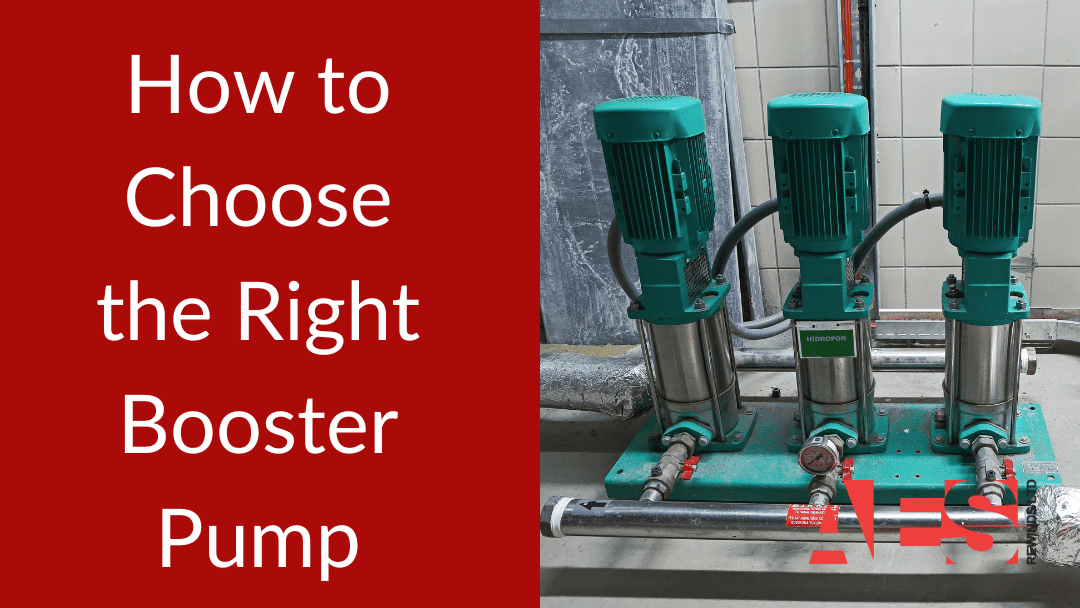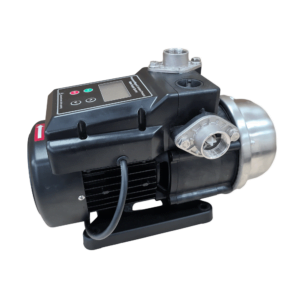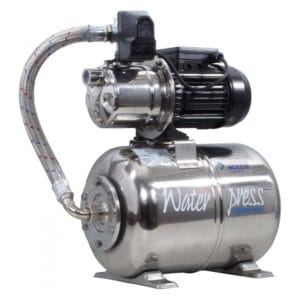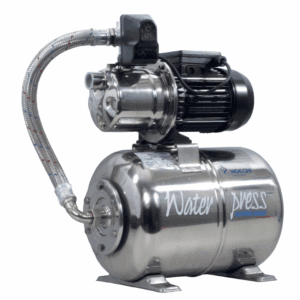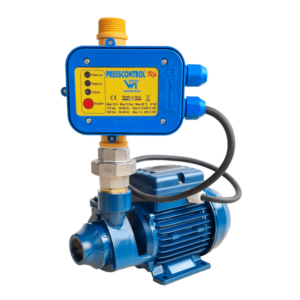When you’re struggling with low water pressure, you’ll quickly discover that choosing the right booster pump isn’t as straightforward as it might seem. You’re not just looking for any device that pushes water through your pipes—you’re seeking a solution that perfectly matches your household’s unique demands while considering factors like energy efficiency and long-term reliability. Whether you’re tired of weak showers or need consistent pressure for your irrigation system, understanding how to select the ideal booster pump will save you from costly mistakes and guarantee you get the performance you need. Let’s explore the key factors that’ll guide your decision.
Key Takeaways
- Measure your current water pressure using a gauge during peak usage times to determine if it falls below the ideal 3-4 Bar range.
- Calculate the total flow rate needed by adding up all simultaneously running fixtures and appliances during maximum demand periods.
- Select between fixed-speed pumps for budget-friendly simplicity or variable-speed systems for up to 50% better energy efficiency.
- Consider available installation space, ensuring adequate room for maintenance access and proper ventilation around the pump unit.
- Factor in total ownership costs, including purchase price, installation, regular maintenance checks, and long-term energy consumption.
Understanding Booster Pump Basics
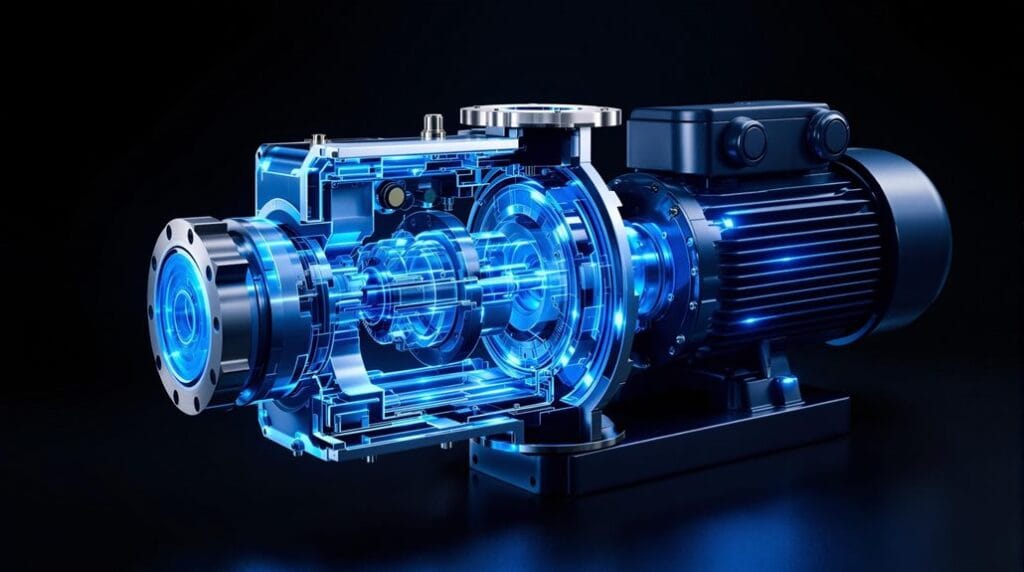
Today’s plumbing systems’ efficiency heavily relies on consistent water pressure, which is where booster pumps come into play. When you’re dealing with multiple fixtures running simultaneously or a multi-storey building, maintaining adequate water pressure can be challenging.
That’s why understanding how booster pumps work is crucial for any property owner facing pressure issues. With variable speed drives like the VSD Buddy APM203 becoming increasingly popular, homeowners now have more efficient options for managing water pressure in compact spaces.
-
%27%20fill-opacity%3D%27.5%27%3E%3Cellipse%20fill-opacity%3D%22.5%22%20rx%3D%221%22%20ry%3D%221%22%20transform%3D%22matrix(-94.29633%2022.2907%20-17.68836%20-74.82704%20129.8%20156.5)%22%2F%3E%3Cellipse%20fill%3D%22%23fff%22%20fill-opacity%3D%22.5%22%20rx%3D%221%22%20ry%3D%221%22%20transform%3D%22rotate(-179%2078%205)%20scale(298.82813%2061.0645)%22%2F%3E%3Cellipse%20fill%3D%22%23fff%22%20fill-opacity%3D%22.5%22%20rx%3D%221%22%20ry%3D%221%22%20transform%3D%22matrix(-11.41926%20-54.67237%20292.51567%20-61.0969%20176.8%20274.1)%22%2F%3E%3Cpath%20fill%3D%22%23fff%22%20fill-opacity%3D%22.5%22%20d%3D%22M240.8%20298.8V0h91.4v298.8z%22%2F%3E%3C%2Fg%3E%3C%2Fsvg%3E) VSD Buddy APM203 Variable Speed Drive Pump 230v£262.21 +VAT
VSD Buddy APM203 Variable Speed Drive Pump 230v£262.21 +VAT
A booster pump is designed to do exactly what its name suggests – enhance your water pressure to meet your specific needs. You’ll find these helpful devices installed between your existing pipes and water meter, where they work automatically to maintain steady pressure even during peak usage times.
The key to their effectiveness lies in their built-in pressure switches, which monitor and adjust flow rate as needed.
Before you get started selecting a pump, you’ll want to understand the basics of water quality compatibility. Whether you’re dealing with potable water for household use or managing an irrigation system, your booster pump needs to match the type of water you’re using.
This guarantees not only peak performance but also extends the life of your investment.
Assessing Your Water Pressure Needs
Before you can choose the right booster pump, you’ll need to get an accurate reading of your current water pressure using a pressure gauge attached to an outdoor tap or water main.
Your next step is to track your household’s peak water usage by noting when multiple fixtures are running simultaneously, such as during morning showers or evening dishwashing.
Armed with these measurements and usage patterns, you’ll be better equipped to select a pump that can deliver the pressure you need when you need it most.
Measuring Current Pressure Levels
Measuring your home’s current water pressure stands out as the critical first step in determining whether you’ll need a booster pump. To get started, you’ll want to attach a pressure gauge to an outdoor tap and take a reading – you’re looking for measurements between 3 to 4 bar for ideal household performance. This simple test will give you a baseline understanding of your water pressure situation.
Don’t stop at just one measurement, though. You’ll want to check your pressure levels during peak usage times when multiple taps are running. This will help you spot any significant drops that might signal a pressure problem.
While you’re at it, measure your flow rate by seeing how many gallons you collect in a minute – you’ll want at least 20 Litres per minute for basic household needs. If you have a water storage tank, it’s worth checking pressure levels when the tank is at different fill levels.
Peak Usage Requirements
Understanding your household’s peak water usage requirements is essential for selecting the right booster pump.
You’ll need to carefully assess how much water your home uses during the busiest times, such as when someone’s taking a shower while the dishwasher’s running. To maintain consistent water pressure throughout these high-demand periods, you’ll want to measure your total water needs accurately.
Here’s what you should consider when evaluating your peak usage requirements:
- Calculate the combined flow rate (GPM) of fixtures that typically run simultaneously.
- Monitor your water pressure during peak times to identify drops below the ideal 3-4 Bar range.
- Track when your high-demand appliances operate and how they affect overall pressure.
- Review your historical water usage patterns to predict maximum demand periods.
Types of Booster Pumps
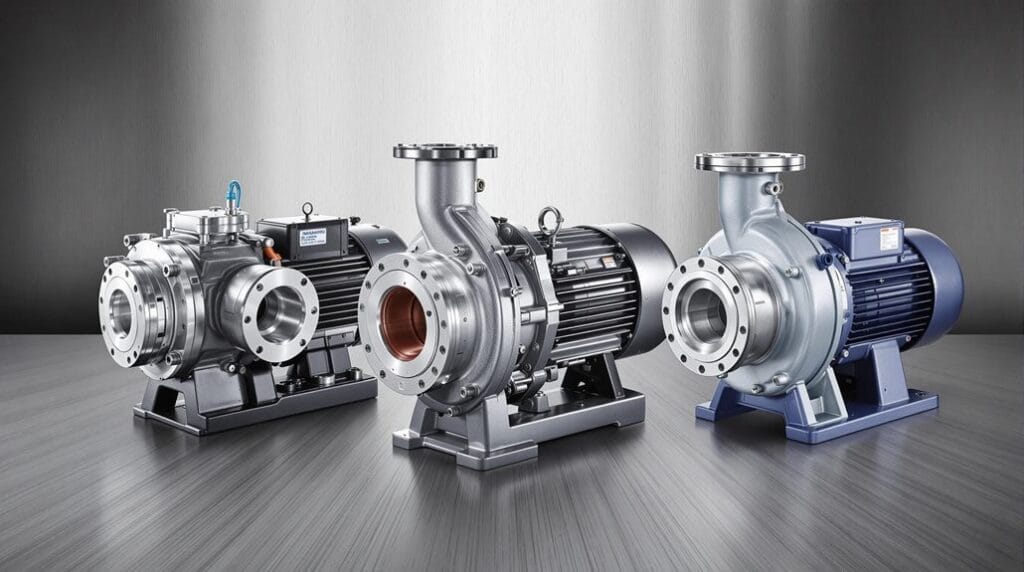
When selecting a booster pump, you’ll need to evaluate whether a fixed-speed model or a variable frequency pump better suits your needs, as fixed-speed units offer simplicity while variable-speed systems provide enhanced efficiency and smoother operation.
Your choice between residential and commercial models will depend on factors like required flow rate, with residential pumps typically being more compact and quieter for home use.
If you’re looking at residential options, you might want to explore self-priming pumps for their user-friendly operation, while commercial applications often benefit from the robust performance of multistage centrifugal systems.
Fixed Vs Variable Speed
The heart of your booster pump decision lies in choosing between fixed and variable speed systems. When you’re comparing these options, you’ll find that each has distinct advantages that could make it the perfect fit for your needs.
Fixed speed pumps run at a constant rate and come with a simpler design that’s often more budget-friendly upfront, while variable speed booster pumps offer superior energy efficiency by adjusting to your actual pressure demands.
Here’s what you’ll want to evaluate when making your choice:
- Operating costs: Variable speed systems can cut your energy usage by up to 50% compared to fixed speed models.
- Initial investment: Fixed speed pumps typically cost less upfront and are simpler to install.
- Pressure consistency: Variable speed pumps provide more precise pressure control through their advanced sensors.
- System longevity: The adaptive nature of variable speed systems reduces wear and tear, potentially extending your pump’s life.
You’ll find that variable speed systems are worth evaluating if you’re dealing with fluctuating water demands or prioritising energy efficiency.
However, if you’re working with steady pressure requirements and a tighter budget, a fixed speed pump might be your best bet.
-
 Pentair Waterpress Multi Evo-A 5-50M+ Single Pump Automatic Booster£701.32 +VAT
Pentair Waterpress Multi Evo-A 5-50M+ Single Pump Automatic Booster£701.32 +VAT -
 Pentair Waterpress Multi Evo-A 5-50M Single Pump Automatic Booster£539.59 +VAT
Pentair Waterpress Multi Evo-A 5-50M Single Pump Automatic Booster£539.59 +VAT -
 Pentair Nocchi Multi Evo-A Booster PumpFrom £539.59
Pentair Nocchi Multi Evo-A Booster PumpFrom £539.59 -
 Superinox 90/50 (Was Superinox 2000) Booster Pump 230v£508.96 +VAT
Superinox 90/50 (Was Superinox 2000) Booster Pump 230v£508.96 +VAT -
 Pentair Superinox Single Pump Booster PumpsFrom £408.64
Pentair Superinox Single Pump Booster PumpsFrom £408.64 -
 Pentair Superinox 60/50 (Was Superinox 1000) Booster Pump 230v£408.64 +VAT
Pentair Superinox 60/50 (Was Superinox 1000) Booster Pump 230v£408.64 +VAT -
%27%20fill-opacity%3D%27.5%27%3E%3Cellipse%20fill%3D%22%23426881%22%20fill-opacity%3D%22.5%22%20rx%3D%221%22%20ry%3D%221%22%20transform%3D%22rotate(-100.6%20138.5%2019)%20scale(127.52494%2068.45923)%22%2F%3E%3Cellipse%20fill%3D%22%23fff%22%20fill-opacity%3D%22.5%22%20rx%3D%221%22%20ry%3D%221%22%20transform%3D%22matrix(-59.14045%209.58468%20-47.80624%20-294.97934%20274.7%20128.6)%22%2F%3E%3Cellipse%20fill%3D%22%2318639f%22%20fill-opacity%3D%22.5%22%20rx%3D%221%22%20ry%3D%221%22%20transform%3D%22matrix(10.16112%2035.0535%20-63.76667%2018.48434%20144.1%20224.6)%22%2F%3E%3Cellipse%20fill%3D%22%23fff%22%20fill-opacity%3D%22.5%22%20rx%3D%221%22%20ry%3D%221%22%20transform%3D%22rotate(-3.7%201870%20-252.4)%20scale(39.95631%20285.40902)%22%2F%3E%3C%2Fg%3E%3C%2Fsvg%3E) Pentax PM45-A Booster Pump Automatic Control – 110v – 022-403£305.30 +VAT
Pentax PM45-A Booster Pump Automatic Control – 110v – 022-403£305.30 +VAT -
%27%20fill-opacity%3D%27.5%27%3E%3Cellipse%20fill%3D%22%23426881%22%20fill-opacity%3D%22.5%22%20rx%3D%221%22%20ry%3D%221%22%20transform%3D%22rotate(-100.6%20138.5%2019)%20scale(127.52494%2068.45923)%22%2F%3E%3Cellipse%20fill%3D%22%23fff%22%20fill-opacity%3D%22.5%22%20rx%3D%221%22%20ry%3D%221%22%20transform%3D%22matrix(-59.14045%209.58468%20-47.80624%20-294.97934%20274.7%20128.6)%22%2F%3E%3Cellipse%20fill%3D%22%2318639f%22%20fill-opacity%3D%22.5%22%20rx%3D%221%22%20ry%3D%221%22%20transform%3D%22matrix(10.16112%2035.0535%20-63.76667%2018.48434%20144.1%20224.6)%22%2F%3E%3Cellipse%20fill%3D%22%23fff%22%20fill-opacity%3D%22.5%22%20rx%3D%221%22%20ry%3D%221%22%20transform%3D%22rotate(-3.7%201870%20-252.4)%20scale(39.95631%20285.40902)%22%2F%3E%3C%2Fg%3E%3C%2Fsvg%3E) Pentax PM45-A Booster Pump Automatic Control – 230v – 022-402£267.73 +VAT
Pentax PM45-A Booster Pump Automatic Control – 230v – 022-402£267.73 +VAT -
%27%20fill-opacity%3D%27.5%27%3E%3Cellipse%20fill%3D%22%23426881%22%20fill-opacity%3D%22.5%22%20rx%3D%221%22%20ry%3D%221%22%20transform%3D%22rotate(-100.6%20138.5%2019)%20scale(127.52494%2068.45923)%22%2F%3E%3Cellipse%20fill%3D%22%23fff%22%20fill-opacity%3D%22.5%22%20rx%3D%221%22%20ry%3D%221%22%20transform%3D%22matrix(-59.14045%209.58468%20-47.80624%20-294.97934%20274.7%20128.6)%22%2F%3E%3Cellipse%20fill%3D%22%2318639f%22%20fill-opacity%3D%22.5%22%20rx%3D%221%22%20ry%3D%221%22%20transform%3D%22matrix(10.16112%2035.0535%20-63.76667%2018.48434%20144.1%20224.6)%22%2F%3E%3Cellipse%20fill%3D%22%23fff%22%20fill-opacity%3D%22.5%22%20rx%3D%221%22%20ry%3D%221%22%20transform%3D%22rotate(-3.7%201870%20-252.4)%20scale(39.95631%20285.40902)%22%2F%3E%3C%2Fg%3E%3C%2Fsvg%3E) Pentax PM45-A Booster Pumps Automatic ControlFrom £267.73
Pentax PM45-A Booster Pumps Automatic ControlFrom £267.73
Residential or Commercial Models
Beyond the speed factors, your choice of a booster pump largely depends on whether you need a residential or commercial model.
For home applications, you’ll typically want to look at self-priming or inline circulation pumps that can handle your family’s everyday water needs. These residential models are designed to maintain consistent pressure when you’re running multiple fixtures, such as your shower, dishwasher, and washing machine at the same time.
If you’re selecting a pump for a commercial building, you’ll need something more robust.
Commercial booster pumps often feature multistage centrifugal systems that can deliver higher pressure and manage the substantial water supply demands of hotels, office buildings, or industrial facilities. You might even need to take into account packaged booster sets for larger operations.
When making your selection, pay close attention to the pressure requirements.
Residential systems usually work well at 3-4 bar, while commercial applications may need considerably higher ratings. If you’re dealing with deep water sources, JET pumps are excellent for homes, but commercial properties might require more sophisticated solutions to guarantee reliable water delivery throughout the facility.
Installation and Space Requirements
Successfully installing a booster pump requires careful consideration of space and location requirements. When you’re planning your pump system installation, you’ll need to reflect on both the immediate space needs and long-term accessibility for maintenance.
You don’t want to squeeze your pump into a tight spot only to struggle with repairs later!
Here are four critical factors you’ll need to take into account for proper installation:
- Measure your available space carefully, accounting for the pump’s dimensions plus extra clearance for maintenance access.
- Check the location’s moisture levels and contemplate using a protective enclosure in damp areas to prevent corrosion.
- Position the pump within 10-15 feet of your water source to maximise efficiency and minimise piping requirements.
- Verify that your chosen spot has adequate structural support for the pump and related components.
Don’t forget about ventilation, especially for indoor installations.
You’ll want to guarantee proper airflow to keep your pump running cool and efficiently. If noise is a concern, think about adding sound-dampening materials or choosing a location away from living spaces.
Power Supply and Energy Efficiency
Power consumption and energy efficiency stand at the forefront of booster pump selection, impacting both your immediate setup and long-term operating costs. When you’re evaluating your options, you’ll need to first determine whether an electric or diesel power supply best suits your needs.
Electric pumps typically offer lower operating costs, making them an attractive choice for most residential and commercial applications. Working with power generation experts can help guarantee you select the most suitable and efficient power solution for your specific requirements.
To maximise energy savings, you’ll want to take into account a variable speed booster pump that can automatically adjust its performance based on your water demand. These smart systems can cut your energy consumption by up to 50% compared to traditional fixed-speed models.
You’ll also benefit from features like intelligent control systems and dry-run protection, which not only enhance efficiency but also extend your pump’s lifespan.
Don’t forget to check the pump’s efficiency ratings before making your final decision. A higher-rated pump might cost more upfront, but you’ll thank yourself later when you see the savings on your energy bills.
Maintenance and Cost Considerations
While energy efficiency impacts your ongoing costs, a complete understanding of maintenance requirements and total ownership expenses will help you make a well-rounded decision.
When you’re planning your budget, you’ll need to factor in regular maintenance checks every six months to keep your pump running smoothly and prevent costly repairs down the line.
To make the most informed decision about your booster pump investment, consider these key financial aspects:
- Regular maintenance expenses typically range from £100-£500+ annually, depending on your system’s complexity.
- Energy-efficient booster pumps can cut your electricity costs by up to 50%, making them worth considering despite higher upfront costs.
- Investing in corrosion-resistant materials can reduce your maintenance costs by 20-30% over time.
- The total cost of ownership includes purchase price, installation, maintenance, and energy consumption.
You’ll want to evaluate these factors carefully when selecting your pump.
By choosing quality materials and planning for regular maintenance, you can extend your pump’s lifespan and minimise unexpected repair costs.
Frequently Asked Questions
How Do I Know What Size Booster Pump I Need?
You’ll need to calculate your required flow rate in LPM based on fixtures used, determine total dynamic head including elevation, and match these with the desired pressure boost (3-4 Bar) against manufacturer specifications.
How Do I Calculate the Size of My Booster Pump?
You’ll need to determine your required flow rate in LPM, calculate total dynamic head (TDH), assess pressure needs in PSI, and consider peak usage from multiple fixtures to select your pump’s appropriate size.
Conclusion
You’re now equipped to select the perfect booster pump for your needs. Remember to carefully assess your water pressure requirements, consider the pump type that matches your usage patterns, and factor in installation logistics. Don’t forget to evaluate energy efficiency and long-term maintenance costs. With these key points in mind, you’ll make a choice that delivers reliable water pressure while keeping your budget in check.
If you need help choosing the right booster pump for your needs get in touch with the team at AES Rewinds for advice.

